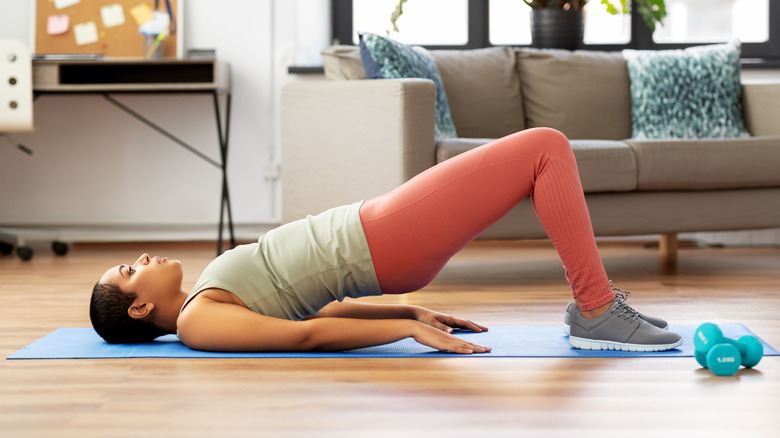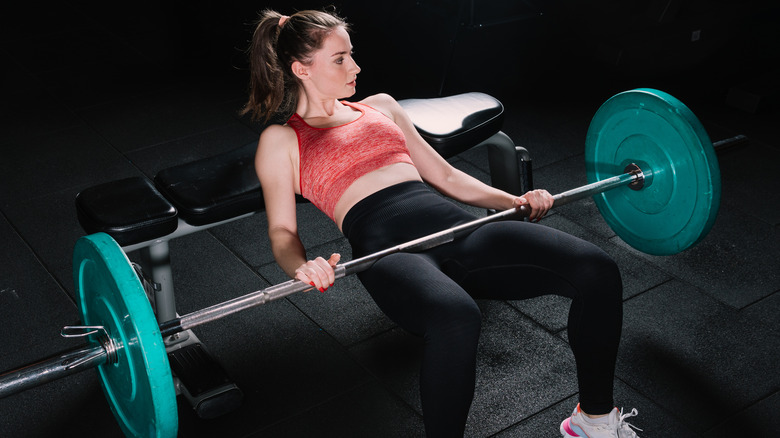Glute Bridge Versus Hip Thrust: What's The Difference?
Putting together a home workout is not always easy. There are so many different possible exercises (not to mention their variations) that it can make your head spin. Of course it helps that some exercises gain enough popularity to hit your social media feed. Seeing so many people do goblet squats or barre makes it feel a little more accessible.
But this can backfire when seemingly identical exercises go viral at the same time, each for apparently different reasons. At the moment, those two exercises are the hip thrust and the glute bridge. As SHAPE says, they both involve squeezing your glutes together and lifting your hips up toward the ceiling. And they both engage many of the same muscles, including obliques, hip flexors, the lower back, the glutes, the hamstrings, and the core ab muscles.
Despite these similarities, the exercises really do achieve different results. And those results come down to the small differences between the exercises. These differences also make them ideal for different types of workouts, allowing people to mix and match while sticking with familiar exercises they've seen before.
It's all in the details
SHAPE says that the biggest difference between the two is shoulder placement. Hip thrusts start you with your feet flat on the floor, hips down, and your shoulders on the edge of a bench. Glute bridges, on the other hand, are done flat on the floor, although your knees are still bent with your feet planted on the ground.
Another key difference is that hip thrusts are generally done with a weight across the hips, while glute bridges are a bodyweight exercise. This, according to Lipstick Lifters, is part of why hip bridges have more impact on the abs. And it makes sense. You have to engage the abs in order to lift the weight across your hips, otherwise you risk straining your back. And as Jill Belland, co-founder of Barre Belle, told SHAPE, the hips have to travel farther because the shoulders are elevated which causes more core engagement.
Hip movement is also important for glute bridges, but for an almost opposite reason. Glute bridges are sometimes called hip bridges, only adding to the confusion, but both the name and the focus on hips is wrong. If you focus on your hips when you do a glute bridge it will make your back arch, according to SHAPE. This can strain your back and overextend your hips while reducing the impact on your glutes. Instead, lift by squeezing your glutes together while you focus on keeping your hips aligned and your back straight.


